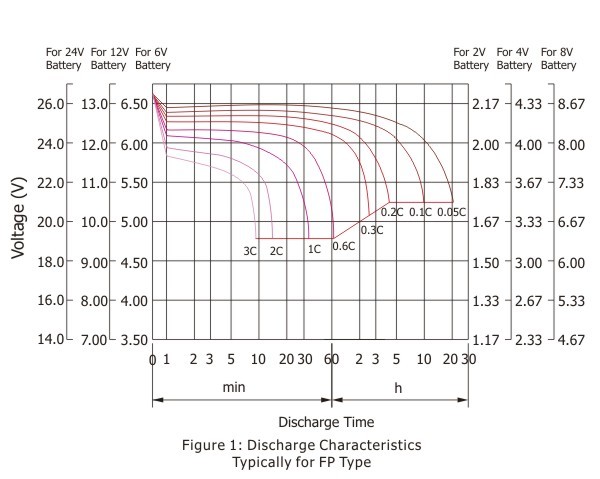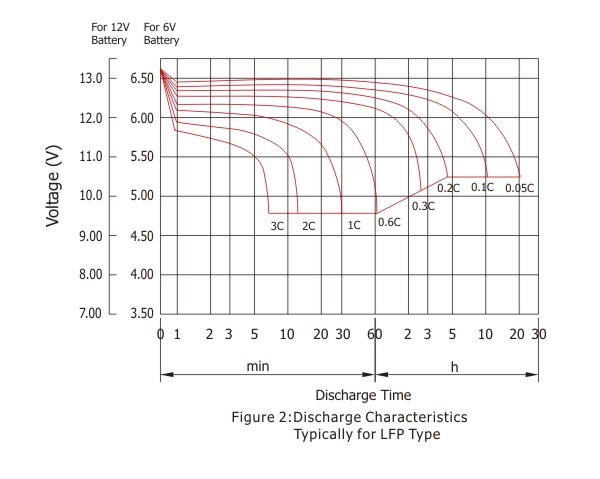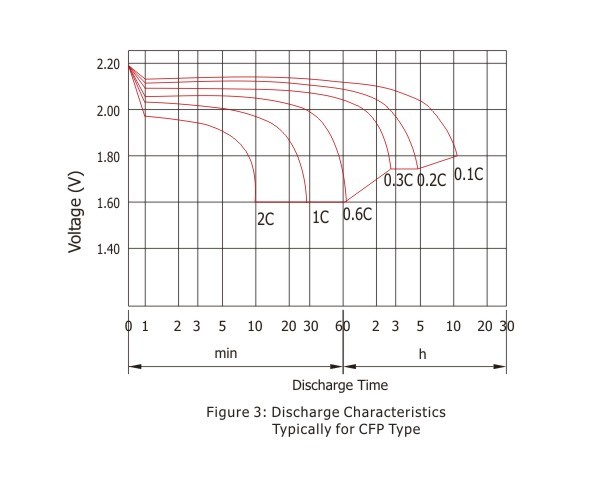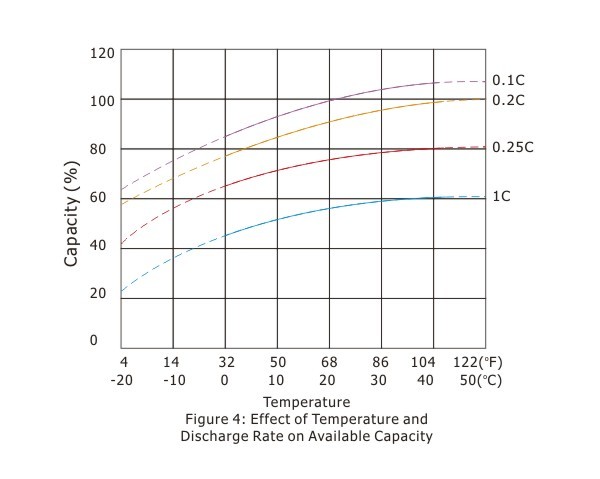Characteristics Of Discharging
1. Final Discharging Voltage
The final discharging voltage is the battery terminal voltage in close circuit voltage per cell to which a battery discharging safely and maximize battery life. The higher discharging current is, the lower final discharging voltage of battery should be .Discharging Current Final Discharging Voltage(VPC)
| Discharging Current | Final Discharging Voltage(VPC) |
|---|---|
| Up to 0.1CA | 1.75 |
| 0.11-0.17CA | 1.7 |
| 0.18-0.25CA | 1.67 |
| 0.26-1CA | 1.6 |
| Above 1.1CA | 1.3 |
2. Battery Discharging Characteristics:
The discharging capacity of battery depends on the discharge rate being used and ambient temperature.
Figure 1,2 and 3 show the different discharging current corresponding to discharging capacity at 20 oC(68oF) to 25oC(77oF) for FP, LFP and CFP types batteries. They show that the rated capacity of a battery is reduced when it is discharged at a value of current that exceeds its 10-hours or 20-hours rate.



3 Temperature Effects in Relation to Battery Capacity.
At a higher temperature, the capacity of battery increases and conversely at a lower temperature, the capacity of battery decreases. Figure 4 shows the effects of different temperature in relation to battery capacity.

Can calculate the batteries’ rated capacity as following formula if the ambient temperature of tested battery is not 20oC-25oC(68oF-77oF).
C= Ct
1+k(t-25)
Note:
C: rated capacity
Ct: the tested capacity on t
t: the ambient temperature of
the tested battery
k: the coefficient of temperature. It will be
increased if the discharge current
increased.
k=0.006 20 hours and 10 hours rated
capacity testing,
k=0.01 3 hours and 1 hours rated
capacity testing.
Please leave your message and tell us what is the product
you are interested in us:


Partner sites:jzyseo